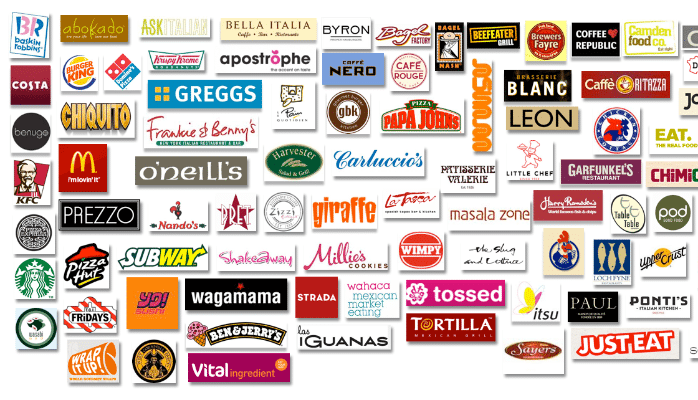In recent times, quick service restaurants are developing like never before, offering a faster and more convenient dining experience at a relatively low cost. As the name implies, a Quick Service Restaurant is a restaurant that offers fast food that can be prepared at the last minute before being served. To some, it might seem simple, but it is not that easy. With increasing customer demand for food quality, extreme competition and rising ingredient prices, running a fast food restaurant can be a challenging task.
Five points have a successful Quick Service Restaurant business:
Maintain the consistency in your Quick Service Restaurant
The most important factor in running a fast food chain is maintaining consistency in all stores. Quality and consistency go hand in hand to build brand loyalty with customers.
The consistency can be achieved at any time by a centralized distribution method called the Hub and Spokesmodel. The Hub is the basic equipment and the spokes represent the various outlets. In this model, almost all cooking is done in the kitchen and only the last stage of cooking is left for the final preparer. Minimal output interference and the use of standard recipes with predetermined ingredients and the type of preparation result in similar flavors in all issues.
Maintain the quality of your Quick Service Restaurant
As consumers become healthier, the quality of food cannot be compromised. The quality must be maintained from the ingredients to the final product served to the customer. The following points should be considered to ensure quality:
- Centralized Procurement: Purchasing consumables from a trusted supplier ensures quality and consistency across all stores.
- Correct receipt of goods: It is important to ensure that the supplies and ingredients supplied are of good quality. Quality checks must be carried out at each stage.
- Storage of stocks: Once the supplies have arrived at the point of sale, they must be stored properly to avoid wastage. Use POS software with integrated inventory and inventory management functionality.
- Quality controls and audits: A quality control system (QC) identifies defects and helps to overcome them. Regular checks and quality controls should be carried out to ensure that only good quality ingredients are used to prepare the dish.
Hire staff for your Quick Service Restaurant
Hiring highly skilled workers at affordable wage and maintaining them is one of the biggest challenges in running a restaurant, especially in the case of a chain of Quick Restaurant Service.
The drop-out rate is high among employees, especially at junior level. In order to improve sales and gain reliable employees, it is advisable to recruit through word-of-mouth propaganda and employee referrals. Recruitment agencies are also a good idea as they provide experienced professionals. Most importantly, you must educate your employees to provide good hospitality and the commitment to the customer.
Manage the costs of your Quick Restaurant Service
It is believed that Quick Restaurant Service incurs low costs both in terms of investment and operation. Margins are rare, however, and the Quick Restaurant Service needs scalability to be successful. Fluctuating commodity prices, high rents, and labor costs weigh on margins. This is especially true in the early days when sales are low and fixed costs are high.
The main areas where costs increase:
- Rent: The location of the point of sale is extremely important for a Quick Restaurant Service to operate cost-effectively and for a good location the Quick Restaurant Service will incur high rent costs.
- Food Costs: Managing food costs without compromising quality remains one of the biggest challenges for the Quick Restaurant Service industry. The cost of raw materials is increasing, but competitive prices mean that the price of the items cannot be increased from time to time.
- Labor costs: Employees are the most variable cost in a Quick Restaurant Service. In the face of fierce competition, employee poaching is a problem that can lead to higher labor costs.
Improving inventory control systems helps reduce the cost of handling materials and waste. It can improve work efficiency and reduce labor costs through better programming. Controls systems can also measure the quality of incoming materials, work in progress, and production.
You can also reduce labor costs by automating your business using POS. Automatic billing, online orders, inventory management, etc. These tools can help you to optimize your restaurant with limited resources.
Improve the sales of your fast food restaurants
In recent years, the United States has experienced strong growth in the hospitality industry. The new fast-food chains are springing up while many are closing after the first year of being open.
In addition to providing good food, competitive prices, and good service, the menu design cleverly helps to increase sales. The cautious placement of products that can be bought together or the relative prices is forcing customers to buy more in their grocery store.
Marketing techniques such as social networking with customers, SMS, e-mail campaigns, discounts, and time-limited offers can grab customers’ attention. It is also important to monitor customer behavior and keep up-to-date information as trends change every few months.
With the new urban lifestyle, consumers are looking for options that deliver cheap, high-quality foods that are quickly prepared and delivered. We hope these tips will help you better manage your Quick Restaurant Service.
Take time to swing by The Chow Public Market and Eatery if you would like to see a good example of quick service done right. We look forward to seeing you!
